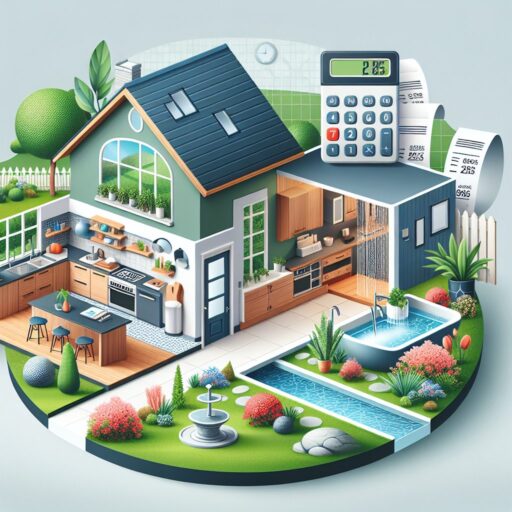Tax Deductions: Can You Deduct Home Improvements?
Can you deduct home improvements? Home improvements can make your house more comfortable, increase its value, and even save you money on taxes. Yes, you heard it right! There are certain home improvement expenses that you can deduct from your taxes. This article will explain how you can do this and what kind of home improvements qualify for tax deductions.

Understanding Tax Deductions
![]()
Tax deductions help reduce the amount of income you have to pay taxes on. For example, if you earn $50,000 a year and have $5,000 in deductions, you only have to pay taxes on $45,000. Home improvements can sometimes be one of these deductions.
Not all home improvements qualify for tax deductions. The Internal Revenue Service (IRS) has specific rules about what counts as a deductible expense. It’s important to understand these rules before you start making improvements to your home.
Also, remember that a tax deduction is not the same as a tax credit. A tax deduction reduces your taxable income, while a tax credit directly reduces the amount of tax you owe.
Types of Home Improvement Deductions
![]()
There are three main types of home improvement deductions: medical-related improvements, home office improvements, and energy-efficient improvements.
- Medical-related improvements: If you or a family member has a medical condition that requires changes to your home, these costs may be deductible. Examples include installing ramps for wheelchair access or modifying bathrooms for people with disabilities.
- Home office improvements: If you use part of your home exclusively for business, you may be able to deduct some of the costs of improving that space. This could include painting or repairs.
- Energy-efficient improvements: The IRS offers tax credits for certain energy-efficient home improvements like solar panels or energy-efficient windows.
How to Claim a Home Improvement Deduction
![]()
To claim a home improvement deduction, you need to itemize your deductions on your tax return. This means you list each of your deductible expenses separately instead of taking the standard deduction.
First, keep all receipts and records related to your home improvements. You will need these if the IRS asks for proof of your expenses.
Then, fill out the appropriate forms when you file your taxes. For medical-related improvements, this is usually Form 1040, Schedule A. For home office improvements, use Form 8829. And for energy-efficient improvements, use Form 5695.
When Home Improvements Increase Your Home’s Basis
![]()
Sometimes, major home improvements can increase the “basis” of your home. The basis is the amount you paid for your home plus any improvements that add to its value.
This is important if you ever sell your home. The higher your basis, the less profit you make from the sale, which could mean less tax to pay.
For example, if you bought your house for $200,000 and made $50,000 worth of improvements, your basis would be $250,000. If you then sell the house for $300,000, your taxable profit would only be $50,000 instead of $100,000.
Limitations and Exceptions
![]()
There are some limitations and exceptions to home improvement tax deductions. Here are a few important ones:
- You cannot deduct the cost of routine maintenance or repairs. These are things like painting, fixing leaks, or mowing the lawn.
- If you receive insurance money or a grant to cover the cost of improvements, you may not be able to deduct the full cost.
- If you rent out part of your home, different rules apply. You may be able to deduct improvements as rental expenses.
Conclusion: Can You Deduct Home Improvements?
![]()
Home improvement tax deductions can save you money and make your home more comfortable and valuable. Remember, not all improvements qualify, and there are specific rules you must follow. Always keep good records of your expenses and consult with a tax professional if you have questions.
So next time you plan a home improvement project, consider if it might also improve your tax situation!
